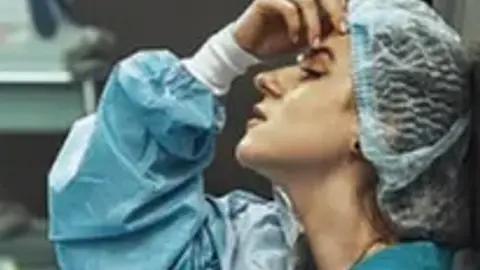Health Care Industry Adds Jobs
There’s a long way to go before the industry recovers from the mass worker exodus from health care during the COVID-19 pandemic. Infection prevention especially faces daunting challenges.
A bit of encouraging news for infection preventionists and other health care professionals on the frontlines battling the current Omicron-fueled surge of COVID-19 can be found in the latest report by the Bureau of Labor Statistics (BLS). The health care industry added more than 18,000 jobs in January, even while COVID-19 infections, hospitalizations, and deaths reached record levels.
Omicron may have reached its peak and will soon start to recede, many health care experts believe, but the variant remains troublesome nonetheless. Yesterday saw 291,998 new infections, and 2461 individuals died from the disease, according to the Johns Hopkins Coronavirus Resource Center. About 65% of Americans are fully vaccinated.

Though the rise in hiring in the health care sector comes as a pleasant surprise, there’s still a long way to go before the industry returns to pre-COVID-19 employment status—if it ever returns there. The BLS notes that employment in health care “is down by 378,000, or 2.3 percent, from its level in February 2020.” The health care industry has lost about 20% of its workers since the pandemic hit in March 2020. Nursing homes have been particularly hard hit.
Health care’s hiring helped produce an overall jobs report for January that came in much stronger than most economists expected, with the economy adding about 467,000. Most economists had predicted that the United States would add about 150,000 jobs.
Wells Fargo economists Sarah House and Michael Pugliese said in a report to clients that “the labor market’s recovery easily leapt over the hurdle thrown up by the Omicron wave in January. Nonfarm payrolls bested even the top end of expectations, rising by 467K. The net 709K revision to the prior two months' gains was also impressive.”
House and Pugliese added that the “solid employment gains despite the Omicron variant’s emergence give Fed officials more evidence that the U.S. economy is getting better at dealing with the bumps in the road from the pandemic.”
While the increase in hiring in the health care sector comes as pleasant news, the competition for health care professionals among hospitals has become anything but pleasant, Kaiser Health News (KHN) reports this morning.
“Already strained by the covid-19 pandemic, hospitals around the country are desperate to staff their facilities as the highly transmissible omicron variant spreads,” KHN reports. “Governors in states such as Massachusetts and Wisconsin deployed the National Guard to help hospitals combat the surge. Six hospitals in Cleveland took out a full-page ad in the Sunday Plain Dealer with a singular plea to the community, ‘Help’.”
Infection preventionist had been facing demographic challenges even before the pandemic struck.
A study last year in the American Journal of Infection Control (AJIC) noted that “the retention and development of employed IPs should be a priority to increase staff tenure (eg, length of employment), engagement, and to decrease turnover. Some turnover cannot be controlled, such as the anticipated retirement of nearly 40% of current US IPs. However, other causes of turnover, such as burnout, poor work environments, and a lack of professional opportunities, can be influenced. Retention of current staff is critical as many open IP positions stay vacant for months, suggesting there may not be enough IPs to fill the current need.”
Source: Bureau of Labor Statistics

Uncovering a Hidden Risk: Alcohol Use Disorder Significantly Increases C difficile Infection Rates
April 10th 2025A groundbreaking study reveals a strong connection between alcohol use disorder and increased risk for Clostridioides difficile infection, challenging traditional assumptions and calling for enhanced infection prevention protocols.
Bridging the Gap: Operating Room and Central Processing Unite to Improve Surgical Efficiency
April 8th 2025Communication breakdowns between the operating room and central processing led to delays and frustration—until collaboration, cross-training, and shared goals turned metrics around and strengthened teamwork.